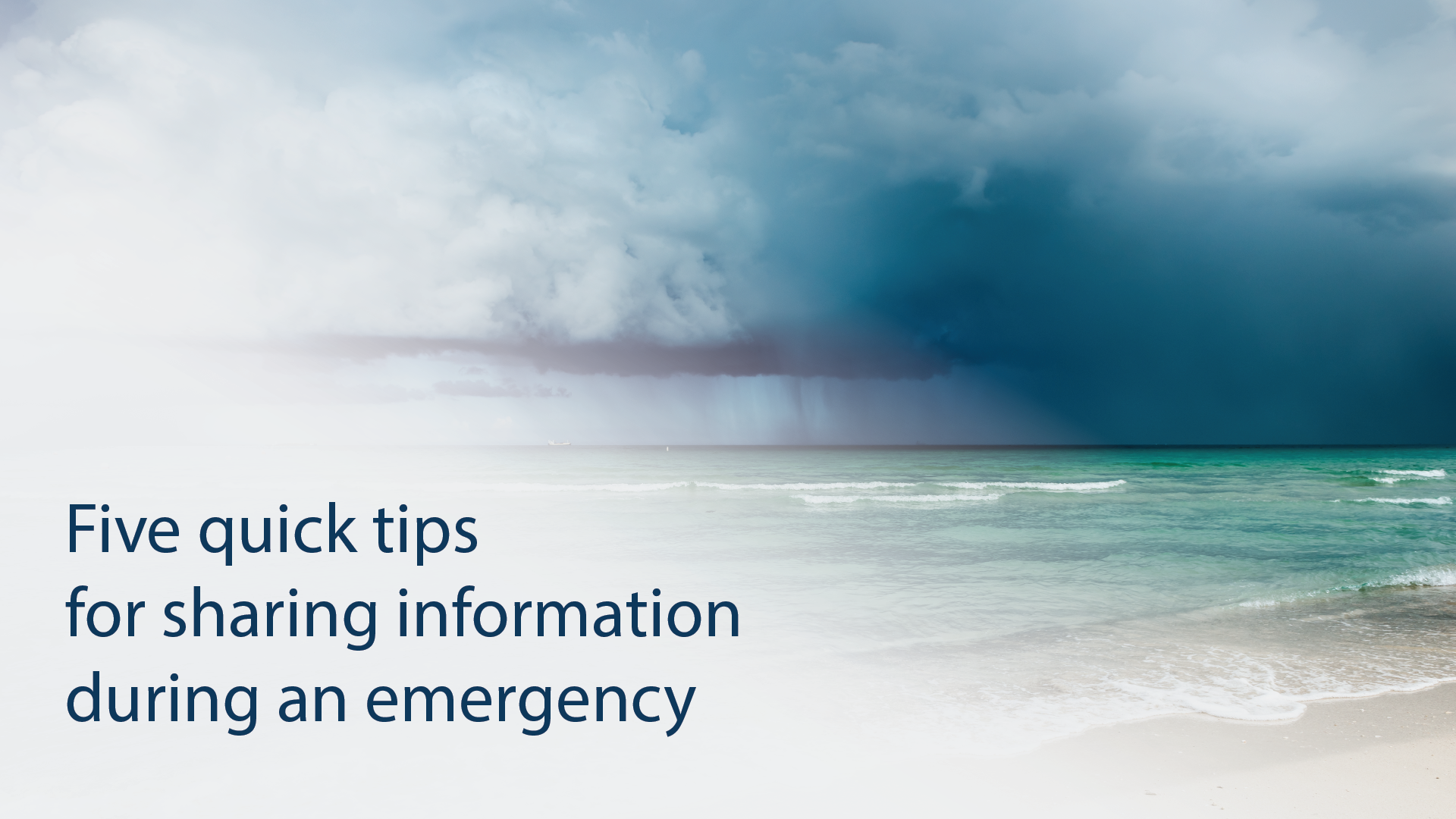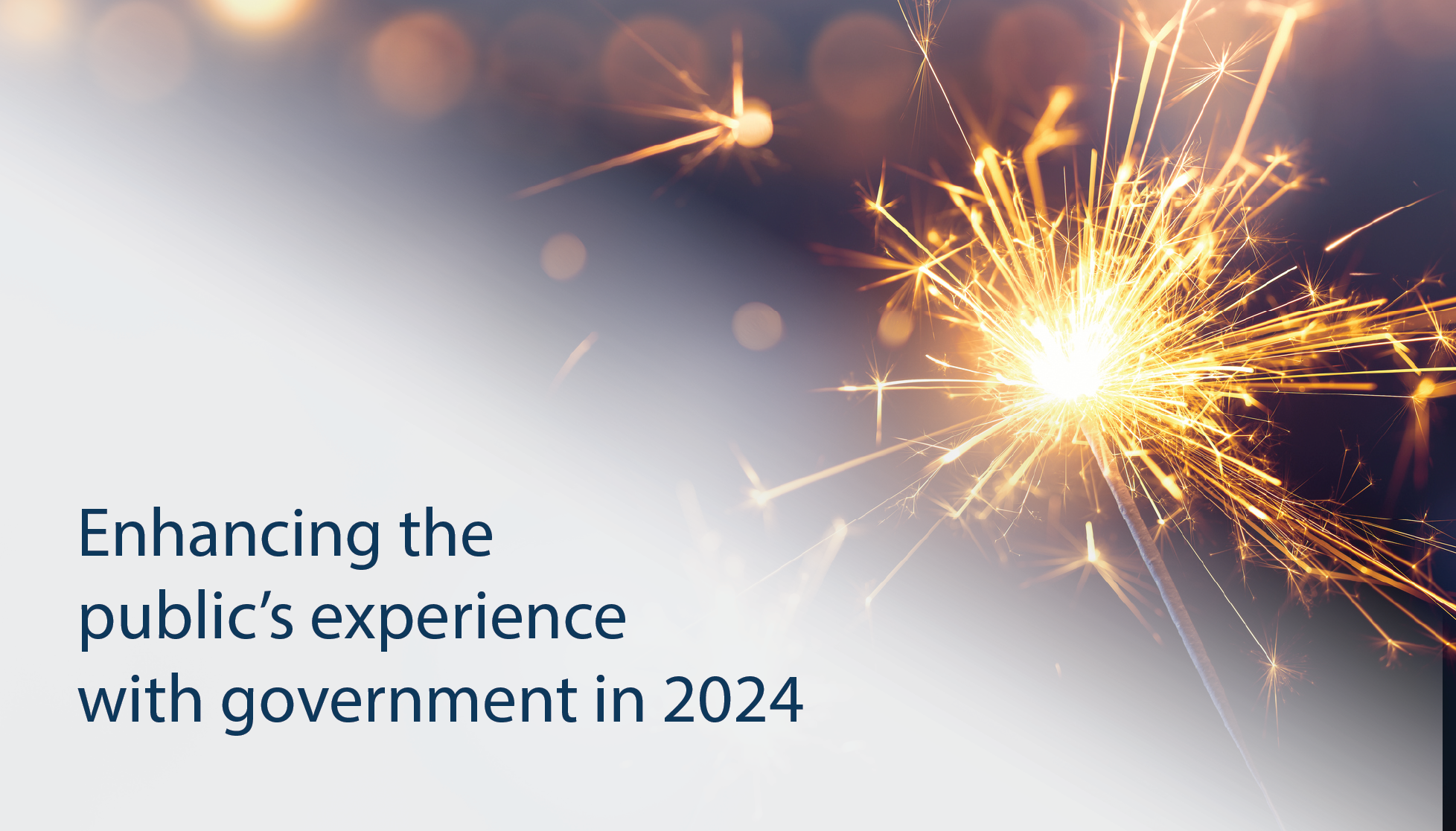During times of national emergency, USAGov serves as the official channel of disaster communications for the federal government. To help people across the country prepare for and recover from disasters, we use different tactics across our channels.
These tips can help your organization deliver timely information to your audience during a disaster.
Ask your visitors and followers to sign up for emergency alerts. To ensure they stay aware, urge your followers to sign up for emergency alerts from their local government, FEMA, the National Weather Service, and more. These text messages, apps, and radio alerts can help anyone have the most updated emergency information available.
Have a content bank ready to go. Our organization relies on information developed both internally and by agency partners before, during, and after an emergency. This could include storm-specific tips, apps to use on the fly, and predictions and mapping. The pre-developed content allows us to tailor to specific storm needs and add hashtags like #Milton or #Helene to increase findability online. Our go-to websites include:
- Ready.gov - A multilingual public service campaign run through the Federal Emergency Management Agency (FEMA) with storm-specific information, planning guidance, and information for individuals, families, businesses, and communities
- Disaster Distress Hotline - A confidential emotional support hotline run by the Substance Abuse and Mental Health Services Administration (SAMHSA) available by phone or text at 1-800-985-5990.
- National Hurricane Center - Live maps from the National Weather Service including active storms, daily projections, and flood predictions
- Disasters and Emergencies on USA.gov - updated with information based on specific storms as well as emergency-related financial, safety, and preparation information and services
Follow FEMA’s social media accounts. FEMA shares timely information that people impacted by disasters need. Follow and constantly check their social media accounts for immediate updates as a storm develops. FEMA HQ is on Facebook, Instagram, and X (Twitter), and has additional accounts across FEMA’s 10 regions and sub-programs like Ready.gov.
Ensure content is accessible even if there are connectivity issues. During emergencies, it is very common for areas to have reduced connectivity. Share information that doesn’t take long to load and doesn’t require a strong internet connection. For example, we include key information that people need in the text of the post itself. Don’t make those in the path or survivors of a storm have to click on a link to get the most essential information as connectivity might be an issue. Relying just on graphics and videos to convey your key messages may also pose problems for those who can’t access them.
Plan for different audiences. Emergencies can impact everybody. In addition to creating messaging for the general public, consider developing content for various geographic regions and different demographic groups too, including:
- Parents with young children
- Pet owners
- Seniors
- People with limited English proficiency
- People with disabilities and caregivers
As this busy hurricane season comes to an end, we're continuing to fine-tune the way we serve agencies and people in need. Follow us on Instagram, X (Twitter), and Facebook in English, and on X (Twitter) and Facebook in Spanish, to see USAGov’s work in action.
Note: this post was originally published in 2019, and was refreshed for the 2024 season.



_v003.png)